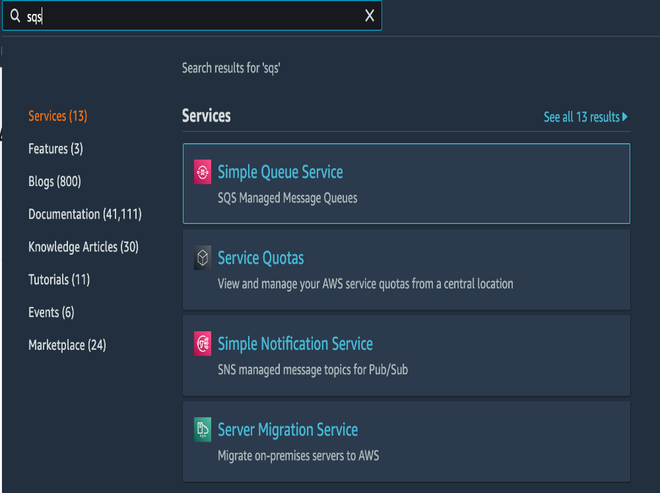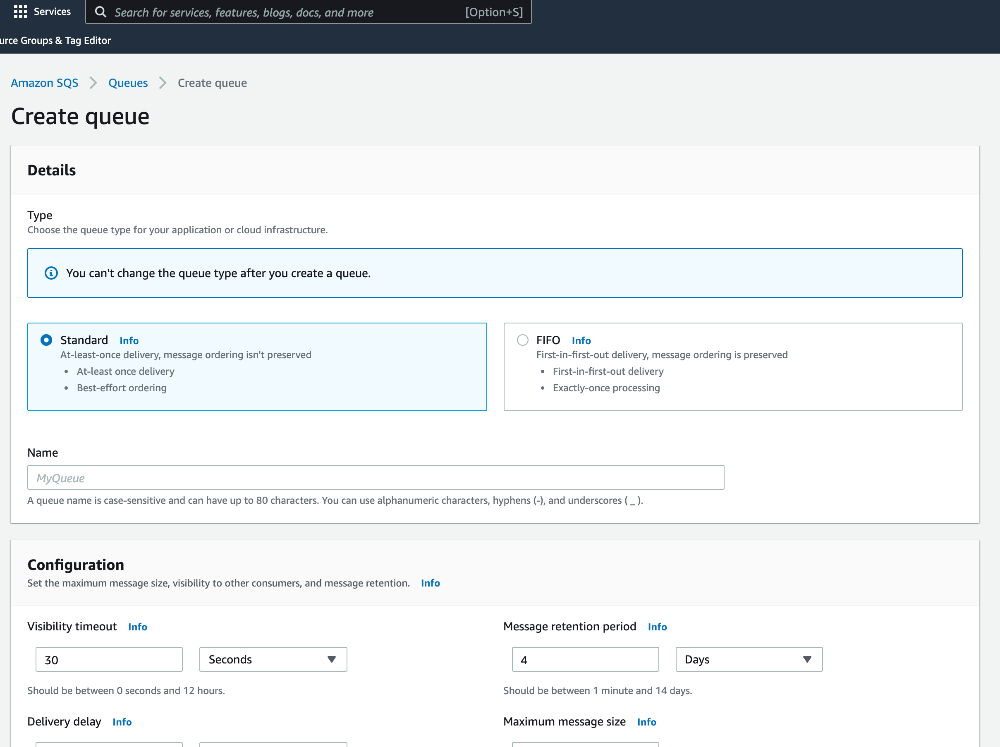SQS
enables web service applications that help to quickly and reliably queue
messages. These
messages have one component in their application that generates only when to be
consumed by another component. Therefore, the queue is a temporary repository
for messages and these messages are awaiting processing. So, Once these
messages are processed, the messages also get deleted from the queue. AWS SQS
service basically adds messages in a queue and then, Users will pick up these
messages from the queue. A queue is a place where you can store your messages
until they are extracted from the queue or expired.
What is
Full Form Of Amazon SQS?
The full
form of “Amazon SQS is Simple Queue Service”. It is fully managed by
AWS it’s self it will take care of all the aspects like hardware provisioning,
maintenance, and scaling. AWS SQS provides communication in a distributed
system or application. The applications which are running in the cloud will be
distributed across the different servers they need to communicate with each
other.
How does
AWS SQS (Amazon Simple Queue Service) work?
SQS standards for Simple Queue Service offer asynchronous massaged-based communication between two services. Before SQS the communication between the two services was based upon the API calls after the SQS the event producer will notify the consumer in an asynchronous manner.

The messages
that are in the queue are in the form of Jason format and the queue is a
holding pool of messages the limit of each message is 256 kilobytes per
message. The publishers will publish the messages into the queue and the
messages are processed or removed with the help of consumers.
What is
SQS (Amazon Simple Queue Service) In AWS?
Amazon
Simple Queue Service (SQS) will let you send messages, store the messages, and
receive messages between various software components at any amount, without
losing of actual messages. Also, without requiring some other services to
be available. so, basically, Amazon SQS is a distributed queue system.
Queues are
used to store textual information so it can be received and used by a consumer
later on. The consumer is something that is getting a message
from a queue. It can be anything that is able to make an API call to
SQS (application, microservice, human, etc….). Using this paradigm we implement
decoupling.
The decoupling allows
the processing of incoming requests later on. So when the consumer is
overloaded, it waits before getting another message. This way our applications
become more fault-tolerant. Amazon Simple Queue Service(SQS) is a fully
managed queue service in the AWS cloud.
Creating,
Accessing, and Managing SQS Queues (Amazon Simple Queue Service)
Follow the
below steps to create a SQS using the AWS console:
Step 1: Open
AWS console and type “SQS” in the search bar. And select it.To know how to
create AWS account .

Step
2: Then hit
“Create queue”. You should see the following screen:

Every field
has an Info clause. You can click on it and read about it if curious.
Step 3: Name the queue ‘geeky_queue’
name and hit “Create Queue”. For other fields defaults are fine.

AWS SQS VS SNS
AWS SQS | AWS SNS |
|---|---|
SQS is an message queuing service. | SNS is an publish/subscribe service. |
It will transmit the data between distributed components. | It will distribute messages to multiple subscribers with the help of email, HTTP, AWS lambda. |
Used when you need to decouple the components. | Used to broadcast the data to all the subscribers. |
Use Cases
Of AWS SQS (Amazon Simple Queue Service)
- Batch Processing: SQS is
typically used to manage workloads that require data processing. The queue
can be used for scenarios like data transfer, image processing, and report
production since producers can add tasks to it, and consumers can retrieve
and process them concurrently.
- Decoupled Microservices: In micro-services architectures,
services need to communicate with each other asynchronously. SQS allows
services to send messages to each other without needing to know the
details of the recipient, enabling loose coupling between services.
- Order Processing: For
e-commerce platforms, SQS can be used to manage order processing. When an
order is placed, it can be added to a queue, and multiple workers can
process orders in parallel, ensuring timely order fulfilment.
- Notifications: SQS can be
used to send notifications or alerts to various parts of an application.
For example, an event occurring in one component can publish a message to
an SQS queue, which can then be processed by other components for
notifications, logging, or real-time updates.
AWS SQS
Queue Types
There are
only two types of queues in SQS:
- First-in-first-out(FIFO): First-in-first-out(FIFO)
queue the order of messages is preserved. So if you receive a message from
the queue you will get the oldest message. This queue also guarantees that
the message will be delivered only once.
- Standart queue: Standart
queue this queue messages are delivered randomly. Also, a message can be
delivered multiple times. So you shouldn’t rely on order and only one-time
delivery in this type of queues.
Features
of AWS SQS (Amazon Simple Queue Service)
- SQS is not push-based, it is
basically on pull-based.
- The size of messages in SQS are
256 KB.
- There is default retention
period in SQS. The default retention period is of 4 days.
- Messages in SQS of a queue is
kept from 1 minute to 14 days.
- SQS also guarantees that the
messages will only be processed at least once.
AWS SQS
Pricing
AWS SQS
follows two pricing models
- Standard: You will be
charged for the number of messages that you have sent or receive
regardless size of the message. And also it is default pricing of the SQS
- Brust: This Pricing model
is specially designed for the applications which have brusty traffic
patterns. You will be charged on monthly bases.
Simple
Queue Service(SQS) – FAQs
AWS SQS
Visibility Timeout
There
will be queue of messages or tasks which needs to be performed and if the
consumer retrieves the message from the queue then it will not visible to the
other consumers with in the stetted timer. It will helps us to reduce the
duplicting the messeges by which we can ensure that a message is processed by
only one consumer at a time.
What Is The
Advantage Of AWS SQS?
Amazon
SQS provides a locking mechanism for messages during processing, which allows
multiple producers to send messages and multiple consumers to receive messages
concurrently.
What Is
Simple Queue Service?
A simple
queue is a data structure that follows the first-in-first-out (FIFO) principle.
This means that the first element added to the queue is the first element to be
removed. Simple queues are often used to implement buffers and message queues.


No comments:
Post a Comment